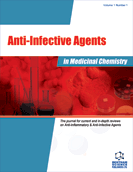Abstract
Chagas disease is endemic from Mexico to Argentina, where it is estimated that 16 to 18 million people are infected with its causative agent, Trypanosoma cruzi, and 100 million remain at risk of infection, emphasizing the necessity to sustain and extend control measures and strategies to combat this disease. Specific chemotherapy with benznidazole or nifurtimox has been recommended for treatment of recent and congenital infection. However, clinical trials with nifurtimox and benznidazole have shown that these compounds have very low activity in preventing the development of chronic Chagas disease. Moreover, the drugs induce a number of toxic side effects. The discovery of new active, non-toxic compounds would probably expand treatment, including those patients in which clinical manifestations are absent or can only be disclosed by more elaborate medical procedures. Recent developments in the study of basic biochemical aspects of T. cruzi have allowed for the identification of new targets for chemotherapy. Like many fungi, T. cruzi has a strict requirement for specific endogenous sterol synthesis for cell viability and growth and is extremely susceptible to sterol biosynthesis inhibitors (SBI). An intensive investigation of the potential trypanocidal effect of specific SBI has been performed, and it was demonstrated that some of these compounds exhibited suppressive and curative activity in murine and dog models of acute and chronic Chagas disease. Other potential targets for anti-T. cruzi chemotherapy that include the antiproliferative lysophospholipid analogs (evaluated in clinical trials as the first oral treatment for visceral leishmaniasis), cysteine protease inhibitors and compounds that interfere with purine salvage and inositol metabolism are also discussed.
Keywords: Trypanosoma cruzi, sterol biosynthesis inhibitors, Nifurtimox, idosqualene cyclase (OSC) inhibitors, Posaconazole
 6
6





















